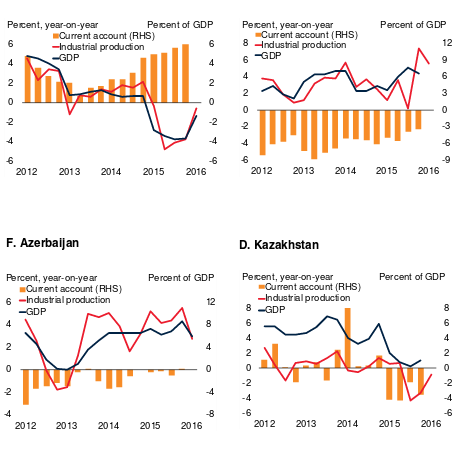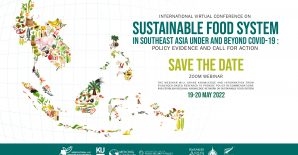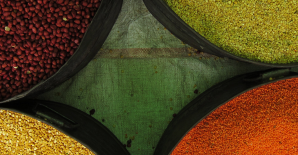Prices and tariffs reduction preserves in Kyrgyzstan
(24 News Agency, 10 Jun 2016) Trend of prices and tariffs reduction preserves in Kyrgyzstan, Head of Summary Estimation and Dissemination of Statistical Information Department Chinara Turdubaeva said today at a press conference. According to her, for five months prices have decreased by 1.8 percent in the country. In May, the cost of food and non-alcoholic beverages decreased by 5.2 percent, while alcoholic beverages and tobacco products, by contrast, rose by 2.5 percent, services - 1.6 percent. The increase in prices for non-food goods was 0.1 percent in January-May 2016.
Agrarian sector has major influence on economic performance in Tajikistan
(Asia-Plus, 10 Jun 2016) The World Bank-Tajikistan Partnership Program Snapshot (April 2016) notes that with 20 percent of GDP and 53 percent of employment, the agriculture sector has a major influence on economic performance. Most of the agricultural produce (93.3 percent) is grown on household plots and private (dehkan) farms, which have proved to be more efficient than large collective farms. To minimize production and marketing risks, farmers grow comparatively small areas of several different crops that are selected from a relatively narrow crop range. The country is prone to various exogenous shocks such as food price spikes that contribute to increased household food insecurity. Measures to reduce the constraints to agricultural growth as well as the sector’s vulnerability to adverse events can thus have a high impact on economic growth and poverty reduction.
FAO reports that drained peatlands are contributing to climate change
(FAO News, 10 Jun 2016) Peatlands exist in all countries in Europe and Central Asia including Russia, which has the largest coverage of peatlands in the world. FAO reports that not only are these rare ecosystems at risk, but in their current condition they are often contributing to climate change. Peatlands are wetlands with a thick layer of organic soil, composed of decayed plant material, or “peat.” While peatlands cover just three percent of all land area worldwide, they store 30 percent of the Earth’s soil carbon. Plant and animal biodiversity flourish in these rare ecosystems, too. Natural peatlands are used for collection of berries (cranberry and cloudberry), mushrooms and medicinal plants. Learn more about peatlands and climate change by looking at the infographic, or the guide to mitigating climate change through conservation, rehabilitation and sustainable use of peatlands. The guide includes case studies from Belarus, Russian Federation, and Ukraine.
World Bank worsens GDP forecast of Kyrgyzstan for 2016
(24 News Agency, 09 Jun 2016) World Bank has worsened the GDP forecast of Kyrgyzstan for 2016, a new World Bank report informs. It is noted that the World Bank reduced the forecast of world economic growth in 2016 to 2.4 percent in comparison with January (2.9 percent). This is due to the slowdown in the advanced economies, the continuing low level of commodity prices, the weak performance of global trade and a reduction in capital flows. Countries-exporters of commodities with forming market and developing countries could hardly adapt to lower prices for oil and other basic commodities, and this explains the half decrease in the value of the forecast. Growth in these countries is projected at a very low level - 0.4 percent, which is 1.2 percent below the January forecast.
Conservation agriculture reducing soil degradation, boosting yields
(FAO News, 09 Jun 2016) Conventional soil tilling and other practices have led to loss of soil fertility and lower crop yields in many parts of Central Asia. In a region where agriculture is an important part of the economy and contributes significantly to food security, action to reverse this trend must be a priority. Since 2011, FAO has been introducing elements of “Conservation Agriculture” – a set of practices and techniques designed to conserve soil structure and fertility – in Azerbaijan, Kazakhstan and Uzbekistan. These practices include growing crops on raised beds, zero tillage, diversification of cropping systems, retaining crop residue and other techniques. The work is part of a multi-country project under the FAO-Turkey Partnership Programme.
World Bank Support Will Improve Transport Links, Increase Access to Markets in Kazakhstan
(The World Bank Press Release, 09 Jun 2016) The World Bank Board of Directors today approved a US$978 million loan to improve transport links along the Kazakhstan Center West Corridor and strengthen the capacity of the local authorities to better manage and preserve roads. The Center West Corridor Project will finance construction of about 1,014 km of road sections between Astana and Shalkar, a missing road link between Kazakhstan’s center and west (from Astana via Aktobe to Aktau). The project will not only help generate road user benefits, but also help to increase trade opportunities initially at the regional level (Torgay and Shalkar), subsequently at the national level, and potentially at the international level, making the western region of Kazakhstan an intermediating trade zone between Russia, the Caucasus, the Middle East, and Asia.
Effort to modernize Tajikistan irrigation systems gets under way
(FAO News, 08 June 2016) Irrigation systems in Tajikistan – and the ways in which they are managed – should see improvement under a two-year FAO project just getting under way here.
Valued at US$ 468,000, the new project is aimed at modernizing irrigation systems and increasing agricultural productivity in a country that is highly dependent on irrigation. Direct beneficiaries will be farmers on dekhans or privately owned commercial farms, members of local water users associations, and the Federation of Water Users Associations in the Govkush canal irrigation system, Vahdat district, Fayzabad district, and the Kofarnihon river basin. “The project will enable water users in pilot regions to enhance their knowledge and capacity on water management, and to adopt best practices in expanding irrigated agriculture profitably,” said Viorel Gutu, FAO Representative in Tajikistan.
New Economic Challenges Ahead for Caucasus, Central Asia
(IMF, 07 Jun 2016) Following a period of rapid growth, the 25th anniversary of independence for the Caucasus and Central Asia (CCA) region comes at a time of economic challenges. The decline in oil prices and the economic slowdown in China, Russia, and Europe will have a long lasting impact on the region. The first regional roundtable, held in Astana, Kazakhstan on May 24 and jointly chaired by IMF Managing Director Christine Lagarde and Kazakhstan’s Prime Minister Karim Massimov, was a platform to deepen the regional dialogue on the way forward. CCA countries have enjoyed average growth rates of nearly 7 percent during the last decade. But growth is expected to slow down to 3.5 percent in the medium term according to IMF projections….
CIS PMs Summit takes place in Bishkek
(UzDaily, 07 Jun 2016) A session of the Council of the heads of the government of the Commonwealth of Independent States (CIS) was held in Bishkek, Kyrgyz Republic, on 7 June.
At the summit, the CIS officials considered wide-range of issues of cooperation of the Commonwealth, the press service of the CIS Executive Committee said. The sides signed a protocol to the agreement on free trade zone on rules and procedures of regulating public procurement, convention on preserving agriculture bio diversity. The sides also approved strategy “Health of population of the CIS”, the concept of cooperation in combating cancer diseases, programme of cooperation in preventing and treating diabetes for 2016-2020 and the concept of cooperation in chemical industry. The agreement on exchange of information on accidents at the power objects of the CIS, the agreement on cooperation in the field of professional education in power sector, agreement on information interaction of the CIS on movement of radioactive materials were signed.
Publications
Practice of Conservation Agriculture in Azerbaijan, Kazakhstan and Uzbekistan
(Nurbekov, A.; Kassam, A.; Sydyk, D.; Ziyadullaev, Z.; Jumshudov, I.; Muminjanov, H.; Feindel, D.; Turok, J. 2016, FAO Book) Abstract: The book summarizes and presents the information on possible ways to adopt Conservation Agriculture (CA) approaches under the conditions of the countries mentioned above and makes recommendations for their further promotion. The Guidelines cover such topics as the significance and current state of agriculture in the project countries, permanent raised-bed planting technologies, zero-tillage technologies, weed varieties and main measures to control them, crop rotation, overview of CA machinery and equipment, and laser-assisted land levelling. The Guidelines target agricultural scientists, specialists, trainers, extension consultants and interested farmers. We hope that the information in these Guidelines will contribute to the promotion of CA, increase of productivity and sustainability in irrigated areas of Azerbaijan, Kazakhstan, Uzbekistan and other countries of Central Asia. Russian Version available.
Global Economic Prospects: Divergences and Risks
(The World Bank Flagship Report, June 2016) Europe and Central Asia - Recent Developments: The slump in oil prices is increasing pressure on key oil exporters, including Azerbaijan, Kazakhstan, and Russia. Recent data point to continued weakness across much of the region. Exchange rates have come under pressure, and in some countries, non-performing loans have ticked upwards or remain at elevated levels. High inflation rates and efforts to defend exchange rates have led to tight or pro-cyclical tightening of monetary policy in oil exporters. The western part of the region, comprised of commodity importers that are more closely linked to the European Union or belong to it, has been growing modestly. Lower fuel costs are helping to moderate inflation (Poland, Turkey) and boost consumer spending. Russia, which accounts for about 37 percent of the GDP in the region, is struggling to adjust to continued low oil prices, trade embargoes, and geopolitical concerns, compounded by tight fiscal and monetary policy. However, there are tentative indications that the decline in some sectors may be bottoming out. Russian Version Available.




Leave a Reply